Three capacitors C1,C2andC3 are connected as show in the figure to a battery of V volt. If the capacitor C3 breaks down electrically, the change in total charge on the combination of capacitors is
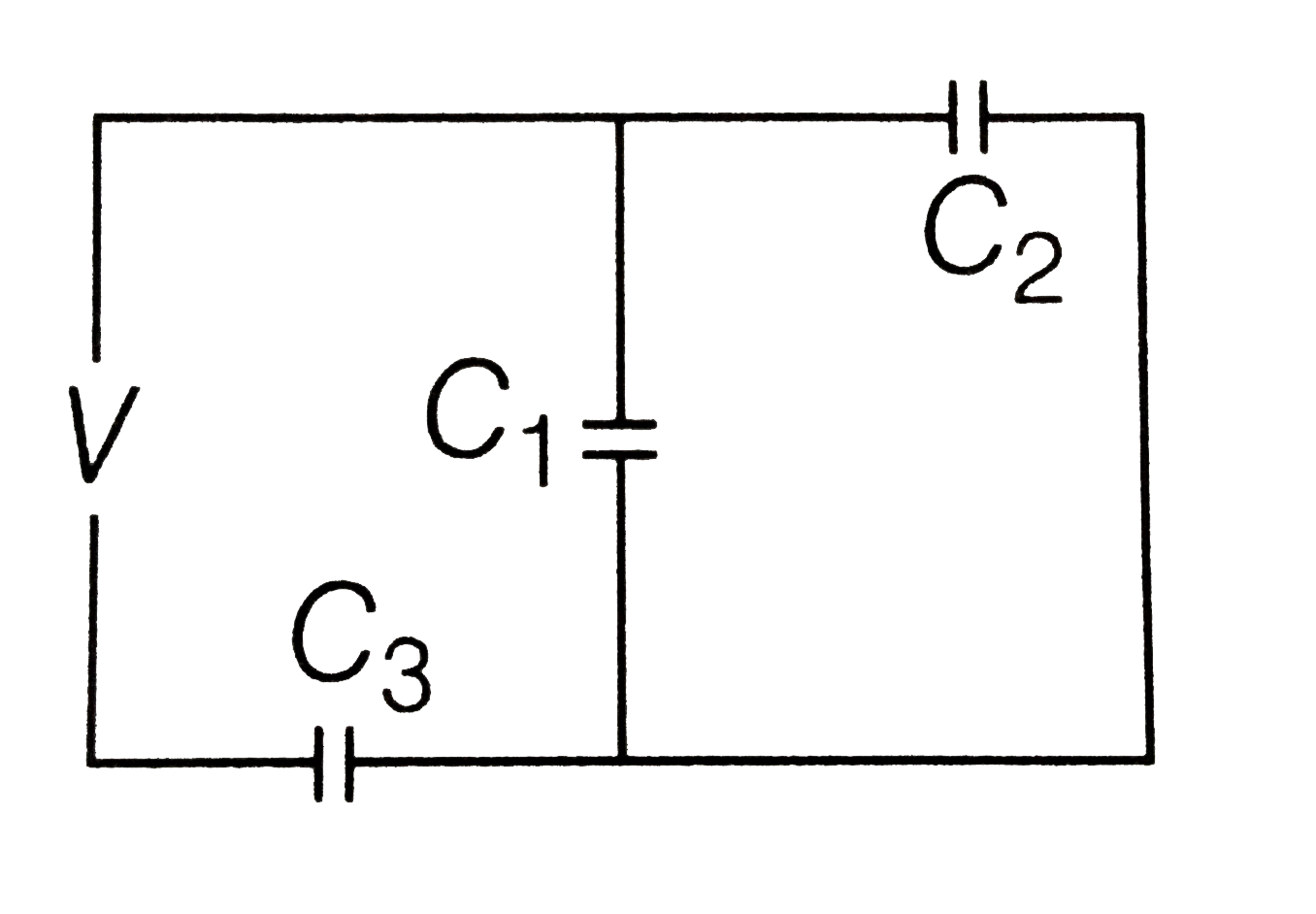
(C1+C2)V[1−(C3C1+C2+C3)]
(C1+C2)V[1−(C1+C2C1+C2+C3)]
(C1+C2)V[1+(C3C1+C2+C3)]
(C1+C2)V[1+(C2C1+C2+C3)]
The correct Answer is:A
Since , C1andC2 are parallel, so their equivalent capacitance will be (C1+C2) Now (C1+C2)andC3 are in series, so the eat equvalent capacitance of circuit.
1C=1C3+1C1+C2=C1+C2+C3(C1+C2)C3
C1=(C1+C2)C3C1+C2+C3
since V is the voltage of the battery so change on this system .
q = CV
⇒q=(C1+C2C3VC1+C2+C3)
If the capacitor C3 breaks down, then total equivalent equivalent capacitance
C=C1+C2
Newm chage stored
q = C' V
q' = (C1+C2)V
Change in total charge
Δq=q'−q [∴q>q]
(C1+C2)V−(C1+C2)C3VC1+C2+C3
=C1+C2V[1−C3C1+C2+C3]
Δq=(C1+C2)V[1−C3C1+C2+C3]
Topper's Solved these Questions
Similar Questions
Which of the following quantity does not change due to damping of oscillations?
View SolutionA body of mass 2kg is thrown into space with escape velocity 11.2km/s, the escape velocity for another body of mass 5 kg will be .
View SolutionThree capacitors C1,C2andC3 are connected to a 6 V battery, as shown in Fig. Find the charges on the three capcitors.

View SolutionTwo capacitors C1 and C2 are connected to a battery of 6V as shown in Fig. Find the charge on each capacitor.

View SolutionTwo capacitors C1=3μF and C2=6μF in series, are connected in parallel to a third capacitor C3=4μF. This arrangement is then connected to a battery of e.m.f., =30V, as shown. The energy lost by the battery in charging the capacitors

View Solutionतीन समरूप संधारित्र C1,C2 तथा C3 जिनकी प्रत्येक की धारिता 6μF है, 12 V की बैटरी से जुड़े हैं जो कि चित्र में प्रदर्शित है । ज्ञात कीजिए : (i) प्रत्येक संधारित्र का आवेश, (ii) परिपथ की समतुल्य धारिता ।
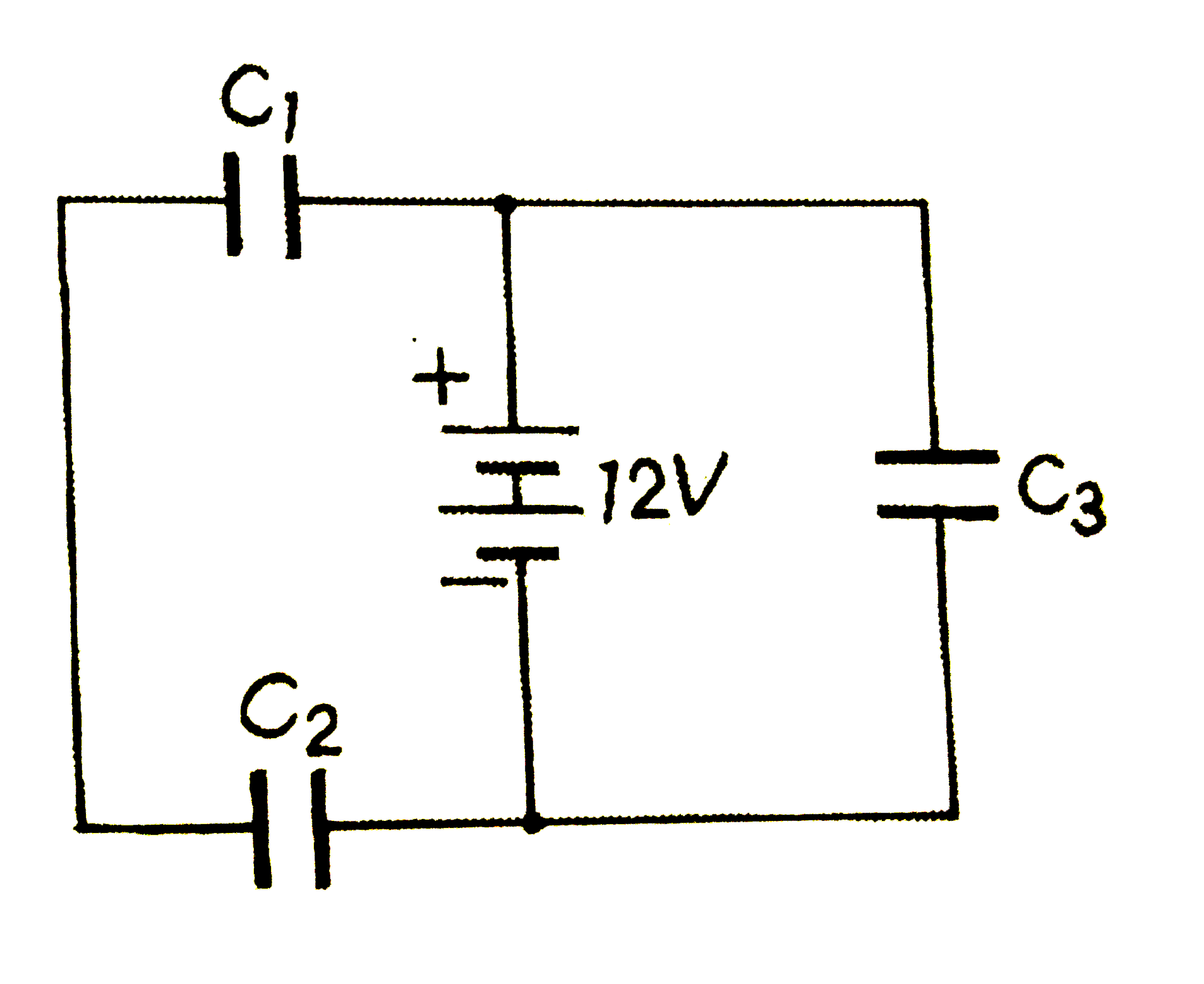
View Solutionतीन आवेशित संधारित्र C1,C2, व C3 श्रेणीक्रम में जुड़े हैं, तुल्यधारिता होगी-
View SolutionA capacitor C1 is charged to a p.d.V. The charging battery is then removed and the capacitor is connected to an uncharged capacitor C2. The final p.d. across the combination is
View SolutionThree capacitors of capacity C1,C2,C3 are connected in series. Their total capacity will be
View SolutionThree capacitors C1,C2 and C3 are connected to a battery as shown in the figure . The three capacitors have equal capacitances. Which capacitor stores the most energy ?
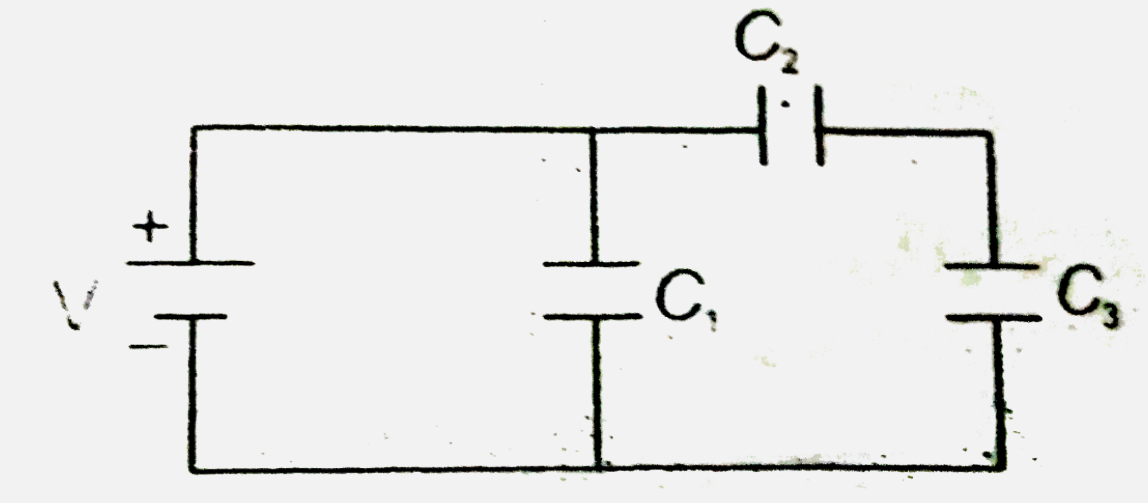
View SolutionFind the charge on capacitor C_(3) Given, then C_(1) = C_(2) and C_(3) = C_(4) = 3 C .
View SolutionThe figure shows a network of three capacitors C1=2μF,C2=6μFandC3=3μF connected across a battery of 10 V. calculate the charge acquired by C1.
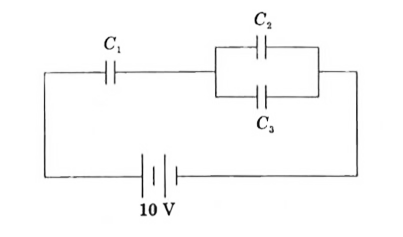
View Solution6muF Capacitor with three capacitance C_(1),C_(2) And C_(3) , Are connected to a 12 V battery [Figure 4.60]. (a) charge on each capacitor, (c) Find the energy stored in the capacitor circuit.
View Solutionएक समान्तर प्लेट संधारित्र की प्रत्येक प्लेट का क्षेत्रफल 2 m^ 2 तथा दोनों प्लेटों के मध्य विद्युत क्षेत्र की तीव्रता 100N/C है। प्रत्येक प्लेट पर आवेश कितना है?
View Solutionसंधारित्र C1=2μ तथा C2=6μF जो श्रेणी क्रम में हैं, को एक तीसरे संधारित्र C3=4μF के साथ समान्तर क्रम में जोड़ा जाता है। इस संयोजन को एक 2 बोल्ट वि. वा. बल वाली बैटरी से जोड़ा जाता है, जैसा कि चित्र में दर्शाया है। इन संधारित्र को आवेशित करने में बैटरी को कितनी ऊर्जा देनी
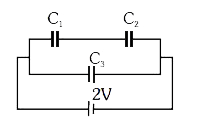
View Solution
